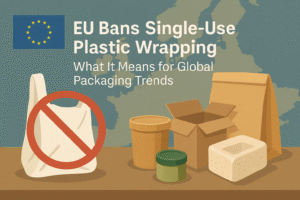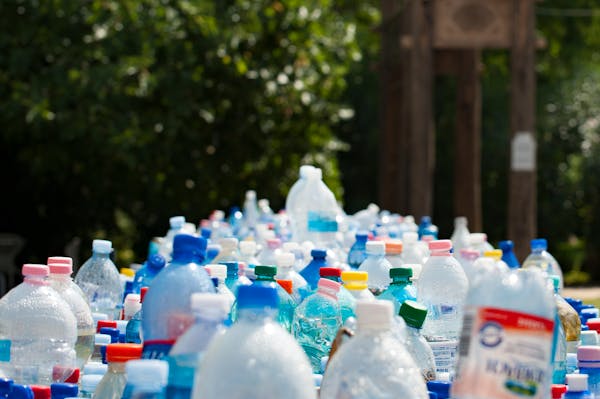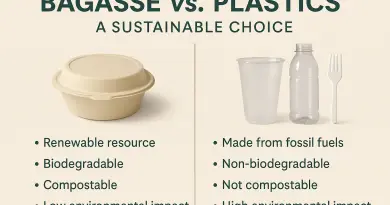EU Bans Single-Use Plastic Wrapping: What It Means for Global Packaging Trends
Introduction
In a landmark move toward environmental sustainability, the European Union has officially banned certain types of single-use plastic wrapping. This ambitious regulation—part of a broader strategy to combat plastic pollution—marks a turning point not just for Europe, but for packaging trends worldwide. As one of the largest economic blocs globally, the EU’s decision sets a new precedent, signaling to global brands that plastic-free packaging is no longer optional—it’s the future.
This blog post explores the implications of the EU Bans Single-Use Plastic Wrapping, how it’s influencing global packaging strategies, and what brands must do to align with evolving sustainability expectations.

Overview of the EU Regulations
The EU’s ban on single-use plastic packaging is a major component of its European Green Deal and Circular Economy Action Plan. Effective January 1, 2030, the new rules prohibit various forms of unnecessary plastic packaging, with a particular focus on consumer goods that contribute heavily to waste.
Key Elements of the EU Bans Single-Use Plastic Wrapping:
Elimination of plastic wrapping for fresh fruits and vegetables under 1.5 kg, condiments in hotels and restaurants, and miniature toiletry bottles.
Mandatory reusable packaging targets: 10% of all packaging must be reusable by 2030 for certain sectors.
Recyclability requirements: All packaging on the EU market must be recyclable by 2030.
Ban on “forever chemicals” (PFAS) in food packaging that come into contact with food, to reduce health risks.
The EU estimates that these regulations will reduce packaging waste by 15% per capita by 2040, cut greenhouse gas emissions by 23 million tons, and save €47 billion in environmental damage costs.
Source: European Commission – Packaging and Packaging Waste Regulation (PPWR)
Global Impact on Brands
With the EU accounting for nearly 15% of global GDP, any regulatory shift within the bloc has immediate ripple effects across global supply chains.
Why This Ban Matters Worldwide:
Export compliance: Global brands that wish to sell in the EU must conform to the new rules, leading to widespread adoption of sustainable packaging standards.
Investor and consumer pressure: Environmentally conscious consumers and ESG-focused investors are pushing for more transparency and sustainable practices.
Precedent for other nations: Countries like Canada, Japan, and even parts of the U.S. are observing the EU’s policies as potential blueprints for their own regulations.
For instance, multinational companies such as Unilever and Nestlé, which distribute goods in the EU, are already reassessing their global packaging strategies to remain compliant and competitive.
Shifting to Plastic-Free Packaging
Transitioning to plastic-free packaging is no small feat, but it is increasingly necessary. Fortunately, there are several actionable strategies brands can adopt:
1. Adopt Compostable and Biodegradable Materials
Materials: Mushroom-based packaging, seaweed films, cornstarch bioplastics, and paper-based wraps are gaining popularity.
Benefits: These materials reduce landfill impact and are often derived from renewable sources.
2. Implement Reusable and Refillable Systems
Reusable containers for B2B and B2C delivery systems (e.g., stainless steel, glass, or durable plastic) can significantly reduce waste.
Major e-commerce and FMCG brands are experimenting with deposit-return schemes and in-store refill stations.
3. Redesign Packaging for Minimalism
Less is more: Streamlining packaging to eliminate unnecessary layers can cut waste and improve aesthetics.
Design packaging to be mono-material (e.g., 100% paper or PET) for easier recycling.
4. Partner with Sustainable Suppliers
Collaborate with vendors that provide certified sustainable materials and follow green manufacturing processes.
Ensure supply chain partners comply with ISO 14001 Environmental Management Standards.
For more practical tips, check out our guide on 5 Simple Swaps for a Zero-Waste Workspace.
Success Stories: Brands Leading the Way
Some forward-thinking companies have already embraced sustainable packaging, proving that innovation and environmental responsibility can coexist profitably.
1. Lush Cosmetics
Eliminated almost all plastic from its packaging by offering “naked” products (e.g., solid shampoo bars and soaps).
Introduced 100% post-consumer recycled pots and a closed-loop recycling program.
2. IKEA
Replaced polystyrene packaging with mushroom-based mycelium for protective packaging.
Aims for all packaging to be from renewable or recycled materials by 2030.
3. Loop (by TerraCycle)
Created a circular shopping platform where consumers receive products in reusable containers that are collected, sanitized, and reused.
Partners include major brands like Nestlé, P&G, and Carrefour.
These success stories highlight how brands can turn sustainability into a competitive advantage, build customer loyalty, and future-proof their operations.
Challenges and Considerations
Despite the clear benefits, transitioning away from plastic does pose real challenges.
1. Cost Implications
Sustainable materials often come with a higher price tag.
Initial investment in R&D and supply chain changes can be significant.
2. Infrastructure Limitations
Compostable and biodegradable materials require specific disposal infrastructure.
In some regions, recycling systems are not equipped to handle new materials.
3. Regulatory Complexity
Varying sustainability standards across markets can create compliance headaches.
Certifications like FSC, Cradle to Cradle, or TÜV can be difficult to navigate without expert support.
4. Performance Trade-Offs
Some plastic-free alternatives may lack the barrier properties or durability of traditional plastics.
Ensuring product safety and shelf life is crucial.
To overcome these obstacles, companies must treat packaging as a strategic priority rather than an operational afterthought.
Future Trends in Packaging
As sustainability becomes a dominant force shaping consumer behavior and regulation, several trends are emerging that will define the next decade of packaging:
1. Smart Packaging
Integration of QR codes and RFID for track-and-trace, consumer engagement, and digital recycling instructions.
2. Edible Packaging
Innovations in food-grade materials made from seaweed, rice paper, and other digestible substances are gaining traction in the food sector.
3. AI-Driven Design Optimization
Use of artificial intelligence to reduce material use while maximizing functionality and visual appeal.
4. Localized Packaging Production
Reducing carbon emissions by manufacturing packaging closer to the point of sale or distribution.
5. Regulatory Harmonization
Efforts to create global standards for packaging materials, recyclability, and labeling will simplify compliance and boost cross-border sustainability.
Conclusion
The EU’s ban on single-use plastic wrapping is more than just a regional policy—it’s a signal to global brands that the era of unsustainable packaging is coming to an end. Companies that act now to transition to plastic-free, circular, and innovative packaging solutions will not only avoid regulatory penalties but also position themselves as leaders in a market where sustainability equals credibility.
By investing in eco-friendly materials, redesigning packaging systems, and learning from early adopters, businesses can align with both environmental goals and consumer expectations. The future of packaging is not only plastic-free—it’s smart, circular, and strategic.





educative blog
It was very informative and eye opening since we are unaware as fashion can cause so much of pollution liked it a lot anf pledge to reuse and buy less of fashoin clothes
Thank you so much for your kind words! We’re truly glad the post resonated with you. Fashion’s impact on the environment is often overlooked, and it’s inspiring to hear your commitment to reusing and buying less. Every conscious choice makes a difference. Together, we can build a more sustainable and thoughtful future. ♻️
Really nice article..very informative!
Thank you! We’re glad you found it helpful.